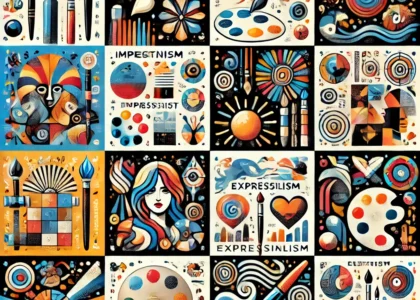Hello, fellow art enthusiasts! I’m Tahseen, the creative mind behind Tahseen’s Creativity, and today, I’m excited to share some tips and insights on one of the most crucial aspects of creating a beautiful canvas painting: choosing the perfect colors.
Color is a powerful tool in art. It can evoke emotions, set a mood, and even tell a story. Whether you’re a seasoned artist or just starting your creative journey, selecting the right colors for your painting can sometimes feel overwhelming. Over the years, I’ve developed a few strategies that help me navigate the vast world of colors, and I’m thrilled to share them with you.
1. Understand the Mood You Want to Create
Before I even pick up a brush, I always take a moment to think about the mood or feeling I want my painting to convey. Are you aiming for something calm and serene, or do you want to create a sense of energy and excitement? For example, soft blues and greens often evoke tranquility, while vibrant reds and oranges can create a sense of warmth and passion.
In one of my recent paintings, I wanted to capture the peacefulness of a quiet morning by the lake. I chose muted blues, soft grays, and gentle whites to create a calming effect that draws the viewer into that serene moment.
2. Consider the Subject Matter
The subject of your painting will often guide your color choices. If you’re painting a landscape, think about the natural colors you see in the scene. If you’re working on an abstract piece, your color palette might be more experimental. I always ask myself, “What colors will best bring this subject to life?”
For instance, when painting a vibrant floral scene, I love to use bold and bright colors like magenta, yellow, and green to emphasize the liveliness and beauty of the flowers. On the other hand, when working on a more subdued, introspective piece, I might lean towards earthy tones and deep, rich hues.
3. Use the Color Wheel as a Guide
The color wheel is an invaluable tool for any artist. It helps you understand the relationships between colors and how they interact with one another. When I’m unsure about which colors to use, I often refer to the color wheel to explore complementary colors (those opposite each other on the wheel) or analogous colors (those next to each other).
For example, if you want a harmonious and pleasing effect, you might choose colors that are next to each other on the wheel, like blue and green. For a more striking and dynamic contrast, opt for complementary colors like blue and orange. Understanding these relationships helps me create balance and interest in my paintings.
4. Experiment with Color Schemes
One of the joys of painting is experimenting with different color schemes. Don’t be afraid to try something new and see where it takes you. Sometimes, I start with a basic color palette and then add unexpected accents to see how they change the overall feel of the piece.
A monochromatic scheme, using varying shades of a single color, can create a sophisticated and cohesive look. On the other hand, a triadic scheme, using three colors evenly spaced around the color wheel, can result in a more vibrant and energetic composition. I’ve found that experimenting with these schemes often leads to exciting discoveries and unique outcomes.
5. Think About the Space Where the Painting Will Live
When creating a painting for a specific space, it’s important to consider the existing color scheme of that environment. Will the painting be the focal point of the room, or will it complement the existing decor? I always try to envision how my painting will interact with the surrounding colors and elements.
For example, if the painting is meant for a room with neutral tones, you might want to use bold colors to create a striking contrast. Conversely, if the room is already full of vibrant hues, a more subdued palette might provide a balanced and harmonious look. Understanding the context in which your painting will be displayed helps ensure that it enhances the overall aesthetic of the space.
6. Trust Your Instincts and Have Fun
At the end of the day, art is a personal expression of your creativity. While there are guidelines and tools to help you choose colors, it’s important to trust your instincts and let your intuition guide you. Some of my favorite pieces have come from simply following my gut and allowing myself to play with colors freely.
Don’t be afraid to take risks and step outside of your comfort zone. Sometimes the most unexpected combinations can lead to the most stunning results. Remember, the process of creating art should be enjoyable and fulfilling, so have fun with it!
Final Thoughts
Choosing the perfect colors for your canvas painting is a journey of exploration and creativity. By understanding the mood you want to create, considering your subject matter, and experimenting with different color schemes, you can develop a color palette that brings your vision to life. And most importantly, don’t forget to trust your instincts and enjoy the process.
I hope these tips help you as you embark on your next artistic project. If you ever need inspiration or guidance, feel free to reach out—I’m always here to share my experiences and passion for art with you.
Happy painting!
Tahseen
Founder & Artist, Tahseen’s Creativity

